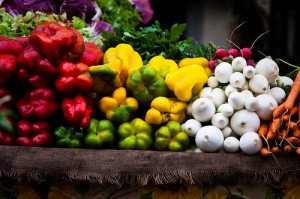Description
We carefully cultivate our vegetables in our land of Alba, capital of the Langhe and Roero hills.
The Bagnetto rosso (Red sauce) is obtained from the mix of only strictly fresh ingredients.
The Bagnetto rosso (Red sauce) is a typical traditional Piedmontese recipe, called “bagnet ross” or “red sauce” in Italian. The name comes from the color of tomato that is used for preparation.
The etymology of the word takes us back to the first wet and then to wet: it is customary to eating boiled “wet” meat “wetting it in various sauces.
It was traditionally prepared in late summer with the latest available vegetables to be eaten traditionally in the winter.
The flavor and fragrance of this sauce is cooked on one of the most unforgettable flavors of Piedmont cuisine.
It also combines very well with grilled meats and as an ingredient based on bruschetta.
Elementary information
Name of the product: Bagnetto rosso (red sauce)
Category: Meat and cheese jam
Net weight: 110 g.
Ingredients: Tomatoes, sweet peppers, onions, seleries, extra virgin olive oil, spices.
Raw material
Origin: Piemonte (Italy)
Variety: Pepers (Capsicum L.)
Way of cultivation: Organic certified
Period of the harvest: from June to September
Way of picking: by hand
Variety Characteristic
The pepper plant is part of the family Solanaceae, native to the Americas.
It seems that the name “Capsicum” comes from “capsa,” which means box, and owes its name to the particular shape of the fruit (a berry) that resembles a box with their own seeds.
It seems that originates in Brazil. And arrived in Europe around the year 1500 after the discovery of the Americas.
The plant is a shrub with an upright habit, and has glossy green leaves, which may have a hair on the trunk and on the underside of the leaves, its flowers, white, single, appearing at the leaf axil, one per node.
It is normally eaten the fruit, a berry initially green hollow and fleshy, but fully ripe seeds turn yellow or red, in the pulp, seeds, round and flattened, but also in the placenta (the white inside) of the result is the “capsicin”, an alkaloid which gives the characteristic spicy flavor to this vegetable.
The pepper is planted in a greenhouse around February, while the fruits can be harvested in summer and autumn.
Curiosity
From the the same species are part of the hot chilli peppers …
The burning sensation you feel tasting the spicy peppers, does not really exist, in the sense that there is an increase of temperature in our mouth.
Capsicin (an alkaloid which gives the characteristic spicy flavor to this vegetable) interacts only with some thermoreceptors in the mouth, stomach, that send a signal to the brain as if our mouths or our stomach “burn”.



